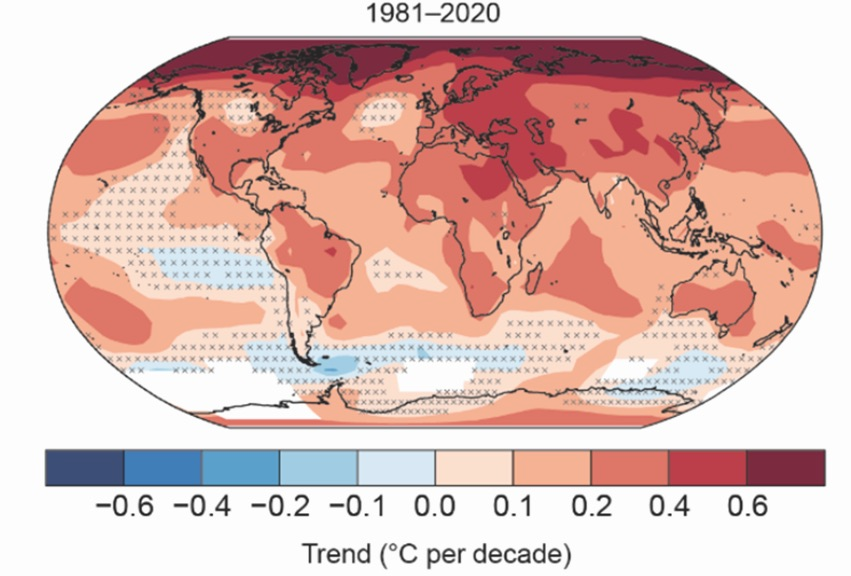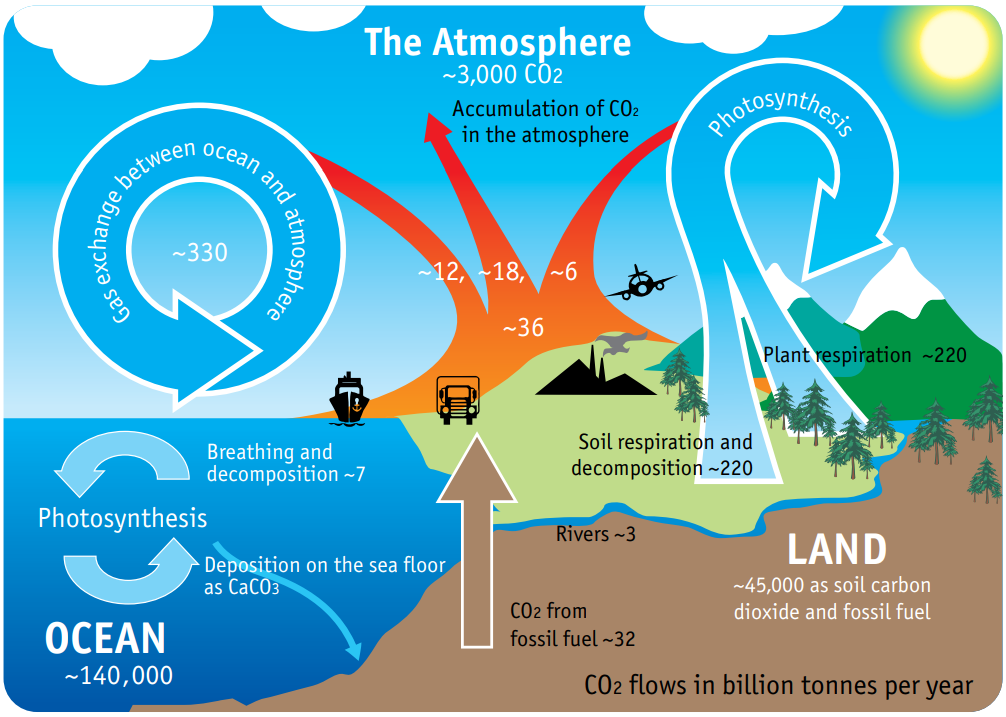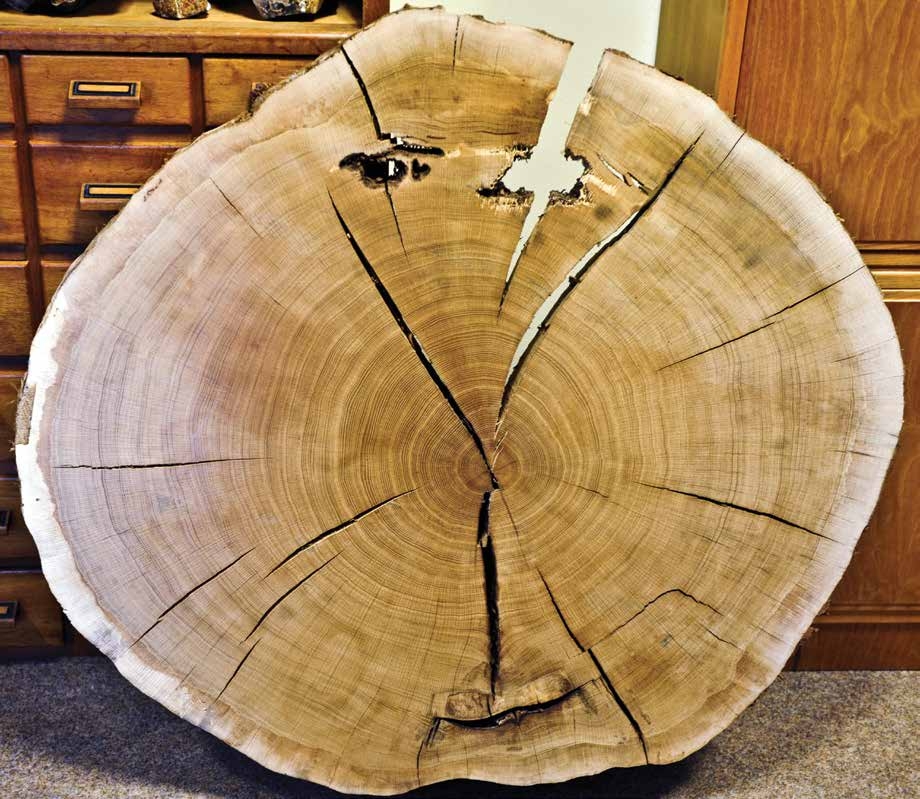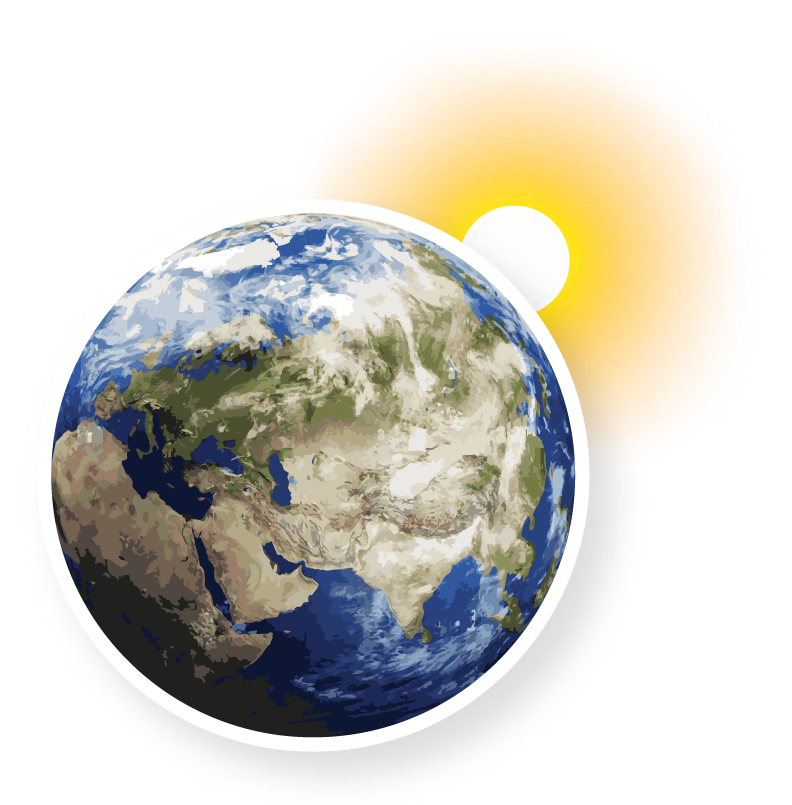During the last century, the temperature on Earth began to rise in a way that could not be explained by natural phenomena. In 130 years, the planet became nearly 1.2°C warmer! According to the IPCC AR6, over the last 50 years, global temperature has increased at a rate unprecedented in at least the last 2,000 years. Global surface temperatures have not been warmer in the past 125,000 years. Observed and projected warming are stronger over land than oceans, and strongest in the Arctic.
Figure 1.4.1 Map of comparative trends in decadal changes in temperature in different regions of the world (1981-2020 and 1850-1900)

Scientists explain the current warming of the planet by an increase of what is called the ‘greenhouse effect’.
The greenhouse effect
The greenhouse effect is the process by which gases, dust and water vapour in the atmosphere absorb the Earth’s heat and hinder its reflection from the surface of the Earth. When scientists first described this effect 200 years ago, they noted how the Earth’s atmosphere acts like a greenhouse for growing vegetables. So, the gases that absorb the Earth’s thermal radiation were called ‘greenhouse gases’. The main greenhouse gases in the atmosphere are carbon dioxide, methane, and nitrous oxide (for convenience, we will refer to them by their chemical formulas, CO2, CH4 and N2O) and some others, as well as water vapour. They obstruct infrared radiation from the Earth’s surface. As a result, the lower atmosphere warms up. Without the greenhouse effect, the average air temperature on the Earth’s surface would not be +14°C, as now, but -19°C. The heat of the Earth would dispel into space without warming the atmosphere. This would make it hard for life to exist on our planet.
Figure 1.4.2 The Earth’s energy balance and the greenhouse effect

Scientists have long predicted that by producing and burning coal, oil and gas, human beings would emit large amounts of CO2 and CH4, increasing the greenhouse effect. In the mid-20th century, the prediction was confirmed: the concentration of these gases all over the world began to increase rapidly (Fig. 1.4.3).
Figure 1.4.3 Concentrations of CO2 in the atmosphere over the past 400,000 years

Is the increase in concentrations of CO2 due only to human activity or is it a natural process?
Natural processes like respiration in living organisms, decomposition, ocean-atmosphere exchange, volcanic activity, and wildfires release CO2 into the atmosphere, playing key roles in the Earth’s carbon cycle (Fig. 1.4.4). However, isotope analysis reveals that the recent rise in atmospheric CO2 primarily stems from human activities, such as burning fossil fuels, which is distinctively different in molecular composition from CO2 released by these natural processes.
ISOTOPE ANALYSIS
Atoms of the same substance may contain different amounts of certain particles, called neutrons. The number of neutrons in an atom indicates whether atmospheric CO2 comes from the respiration of living organisms or from the combustion of coal, oil, and natural gas.
Figure 1.4.4 The CO2 cycle in nature

The ocean, forests, and soils of our planet ‘help’ human beings by absorbing half of all their CO2, but the other half accumulates in the atmosphere (Fig. 1.4.4) and increases the greenhouse effect. This causes the atmosphere (Fig. 1.4.5) and then the ocean to warm up (Fig. 1.4.6). The increase in the global mean average temperature between 1850 and 2023 (Fig. 1.4.5) illustrates the WMO finding, based on data from different meteorological centres, that the past nine years between 2015 and 2023 were the warmest years on record. A similar trend is observed in oceans. People have cut down a large share of the world’s forests, so their ability to absorb CO2 from the atmosphere is now less than it was in the past.
Figure 1.4.5 Increase in the global mean temperature on Earth between 1850 and 2023 as shown by different meteorological centres

Figure 1.4.6 Increase in ocean heat content between 1955 and 2020

The ocean plays the most important role of all in shaping the Earth’s climate. It contains more than 90% of the energy of the planet’s climate system. If only the atmospheric temperature, but not that of the ocean, was rising, there would be much less cause for alarm. This would mean that the main link in the climate system remained unaffected. Unfortunately, the temperature of the oceans is also rising year by year. The annual estimates for warming of the ocean for its first 2,000 metres between 1955, the year when modern recordkeeping began, and 2022 (Fig 1.4.6) present the average over five years – for example, the 2020 value is the average for 2018-2022. So, climatologists believe that instances of cold winters or even a cooling of the air all over the planet cannot signal a halt to global warming, because the amount of heat in the Earth’s climate system continues to rise year by year, with most of the increase occurring in the ocean.
Aerosols are yet another factor with sizeable impact on our climate. Aerosols are small particles that come in many forms. They can be natural, like wildfire smoke, volcanic gases, or salty sea spray. Human activities can also generate aerosols, such as particles of air pollution or soot.
Figure 1.4.7 Aerosols emitted by natural and human activities

The role of aerosols in climate science is complex. In general, light-coloured particles in the atmosphere will reflect incoming sunlight and cause cooling. Light-coloured aerosols are those formed from sulphur dioxide (SO2) gas emitted from volcano eruption, which combines with water in the atmosphere to form tiny particles that can circle the globe and stay in the air for a few years. Burning fossil fuels releases sulphate particles and SO2 which, like volcanic aerosols, can reflect sunlight and make the atmosphere cooler. Dark-coloured particles absorb sunlight and make the atmosphere warmer. An example of dark-coloured particles is soot, made up of particles of carbon from burning fossil fuels, wood or other plant matter. Because different types of particles have different effects, aerosols are a hot topic in climate research.
Without aerosol pollution, Earth would be around 0.4°C warmer than it already is according to the 2021 IPCC AR6 report. This is compared to the warming coming from the greenhouse gas emissions estimated at around 1.5°C. So, human activity both warms and cools the planet, but its impact on global warming (by strengthening the greenhouse effect) is about three times greater than the cooling effect of aerosols. Therefore, there is every reason to speak of ‘climate change’ caused by human beings.
As early as the 1970s, the climatologist Mikhail Budyko, who made accurate forecasts of climate change, predicted that human beings would face problems by 2000 in the form of new and ‘strange’ changes in climate. He was right.
Since the time people began to burn coal, the air temperature on the Earth’s surface has risen by nearly 1.2°C, with 0.85°C of that growth occurring in the last 50 years (Fig. 1.4.5). At first glance, the change seems modest and does not seem to pose a threat. But we must remember that this is the average change for the whole planet and for all seasons of the year. The change in certain places has been much greater. Scientists found that the Earth’s poles are warming faster than the global average, a phenomenon known as polar amplification. This phenomenon is already being seen in the Arctic, which has warmed nearly four times faster than the global average over the past four decades. Recent studies show that the Antarctic is warming twice as fast as the global average.
In some northern parts of Europe, North America and Asia, winters have become colder and not warmer. Looking at weeks and months, we find that the temperature might be 10°C warmer for two to three weeks and then 9°C colder than the average for that time of year in that region in the second half of the twentieth century, with an overall warming of 1–2°C. What is most striking is not the overall change, but the fact that the weather has become much more changeable, with storm winds and heavy rainfall or snowfall.
Didn’t the weather behave strangely in the past as well? It certainly did. Alexander Pushkin, the famous Russian poet, wrote in his masterpiece, Eugene Onegin (1833):
“That year, the autumn lingered,
In yards and fields, loath to go.
Nature waited, icy-fingered
Winter stalled its fall of snow
Till January the third, at night…”
Pushkin uses Russia’s ‘old style’ Julian calendar, so his 3 January is our 20 December. But that is still very late for the first snow in the central part of European Russia, where it usually starts snowing at the end of October.
Figure 1.4.8 Tatiana sitting on the bed. Winter Illustration from Eugene Onegin by D. Belyukin (Russia, 1999)

In the 19th century too, there were warm days in the wintertime and cold spells in summer, storms and floods, heavy snowfalls and droughts, and even frozen rain that covered everything with a thick crust of ice.
The key point is that such dangerous natural phenomena are now happening more often, and they will become even more frequent in the future. We will continue to experience periods of very cold weather, although, over time, they are likely to become less common. There will be some positive effects from global warming, but at present we see more negative effects.
Using computer models that take account of all the effects (both natural and human- induced), climatologists can explain what is happening now and make a forecast for the entire 21st century. Depending on the level of greenhouse gas emissions, the temperature on Earth could rise dramatically during the current century. In a favourable scenario, the changes compared to the beginning of the 20th century will be 1.5–2°C. But in the worst case the climate could become more than 5°C warmer. Northern Europe is expected to warm more rapidly. Also, the Arctic has warmed nearly four times faster than the global average over the past four decades and it is expected that this warming trend will continue to be more pronounced over the 21st century. This will have a major impact on the levels of precipitation, the sea level, and the frequency and severity of extreme weather events. How the 21st century ends will depend largely on human activity and the actions that we take now. Of course, the influence of the sun, volcanoes, ocean currents and other natural processes is also very significant. But the climate changes they cause are of a short duration and their role over long periods is small.
Scientists stress that every fraction of a degree of global warming results in exponential changes in regional mean temperature, precipitation, and soil moisture. The scientists used a database with hundreds of scenarios to assess how global warming will impact indicators of the climate, such as global temperatures, precipitation, and soil moisture. Because of improvements in global models, they were able to come up with more accurate regional assessments.
Modelling studies now tell us about changes in the annual mean temperature and precipitation resulting from global average temperature increases of 1.5°, 2° and 4°C (Fig. 1.4.9). They suggest that across warming levels, land areas warm more than ocean areas, and the Arctic and Antarctic warm more than the tropics. These results also suggest that precipitation is projected to increase over high latitudes, the equatorial Pacific, and parts of the monsoon region, but decrease over parts of the sub-tropics and in limited areas of the tropics. Many changes in the climate system are projected to become larger in direct relation to increasing global warming, including ocean acidification, melting of ice in the Arctic and Antarctic, and the rise in sea levels.
Figure 1.4.9 Modelled changes in the annual mean temperature (above, °С) and annual precipitation (below, %) relative to 1850-1900 for global average temperature increases of 1.5°, 2° and 4°C


So, most scientists agree that humanity has most probably played the biggest role in the climate change taking place on Earth for the last 70 years (since the mid-20th century) and which will continue in the coming century. They strongly emphasize the urgent need to reduce greenhouse gas emissions in the current decade if we are to have a fair chance of keeping the rise in temperature well below 2°C and 1.5°C.
The biggest human impact on the climate system is from greenhouse gas emissions caused by the combustion of fossil fuels: coal, natural gas and petroleum products. Reducing the use of fossil fuels by power plants, transport, industry and in everyday life will reduce human impact on the climate. But the combustion of fossil fuels is not the only factor. Human beings influence the climate by cutting down forests, which absorb CO2 from the atmosphere, by allowing major leakage of methane gas from pipelines, and by applying new synthetic and potent greenhouse gases in industry. This is what makes it so difficult to solve the problem of climate change: what is needed is a transformation of our societies and the entire world economy, to make it ‘green’ and climate safe, so that it can work to the benefit of both people and the planet. Scientists stress on the urgent need for such transformation to have a fair chance of stabilizing the temperature increase at safe levels.
QUESTIONS
1
Was there a greenhouse effect in the past? How was it caused?
2
Why has the temperature on Earth risen so much in the last 100 years?
3
Has the growth of CO2 concentrations in the atmosphere been due to natural causes or to human activity?
How has this been proved?
4
How do we know that human beings both heat and cool the planet? Which of the two effects is greater?
5
By how many degrees have temperatures risen over the past 130 years? Has the increase in northern Europe been greater or less than in the world as a whole?

TASKS

Find a thick, cleanly sawn log or a large tree stump.
Look at the annual growth rings: you will see that some are narrower than others.
The oldest growth rings are at the centre of the log or stump and the youngest are at the edge.
Wide rings mark warm years and narrow rings mark cold years.
Count how many of the last 20 years were warm and how many were cold.



